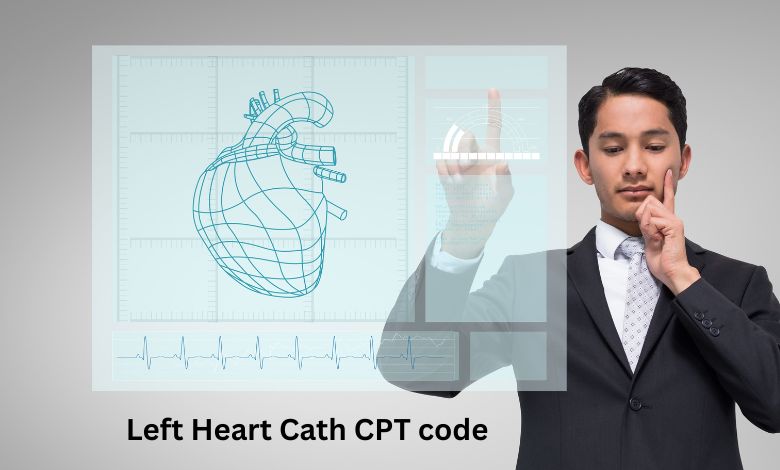Cardiac catheterization is an analytical process used by cardiologists or a group of cardiology fellows, nurses, and operators to measure the blood channel supply of the patient’s heart. To identify or handle a variety of cardiac conditions, such as blocked arteries or improper heartbeats, a catheter is a small, flexible tube implanted via a blood vessel into the heart. These processes are an essential feature of the cardiology CPT codes since the Current Procedural Terminology (CPT) codes are vital for verifying and billing them. Cardiology-specific CPT codes involve a broad range of services and collections from 93451 to 93598 for cardiac catheterization handling. These codes address a variety of topics related to cardiac catheterization processes, such as the implantation and placing of devices such as catheters inside various cardiac chambers, assessing blood vessel and heart pressure, checking for valvular anomalies monitoring cardiac activity, and surgical interventions like angioplasty and stenting.
What are CPT Codes?
In order to improve accuracy, and efficiency, and streamline reporting, physicians and other healthcare workers can use the Current Procedural Terminology (CPT) codes, which provide a standard language for recording medical services and procedures. Additionally, CPT codes are utilized for administrative management tasks including processing claims and creating standards for medical care review.
Importance of Correct Coding:
In addition to being necessary for reimbursement, accurate coding is also necessary to ensure regulatory compliance. Denials of claims, late payments, and possible audits can result from incorrect coding. The updated coding standards are intended to take into account contemporary procedures and guarantee that medical billing professionals are fairly compensated for their work.
CPT Codes for Cardiac Catheterization Billing:
This process is normally applied to evaluate and supervise a range of heart issues including coronary heart failure, left ventricular dysfunction, congenital heart disease, myocardial and pericardial disorders, cardiac arrhythmia, valvular heart illnesses, artery disease, and irregularities in the hemodynamics of both the right and left sides of the heart.
Cardiac catheterization CPT codes:
For cardiac catheterization, CPT codes 93452–93461, among others, cover a range of procedures such as imaging report generation, contrast injections, image supervision, and interpretation.
Non-congenital left heart catheterization:
Inspection and treatment of coronary artery disease (CAD), assessment of coronary artery bypass graft(s), diagnosis and management of ventricular fibrillation, measurement of the level of severity of myocardial disorders (cardiomyopathies) and valvular disorders (aortic stenosis, aortic insufficient blood flow, mitral stenosis, mitral insufficiency), and rehabilitation of valvular heart disease (valvuloplasty, through the skin transcatheter valve replacement) are all included in left heart catheterization.
Left heart cath CPT codes:
Once observing the left side of the heart only, the following Left heart cath CPT codes CPT codes must be used:
93452 CPT Code: As complete, left cardiac catheterization with tomography observation and analysis, contains intraprocedural injection(s) for left ventriculography this CPT code will be used.
93458 CPT code: Imaging management and understanding; catheter implant in coronary artery(s) for coronary angiography, consisting of intraprocedural injection(s) for coronary angiography; and, wherever needed, left heart catheterization with intraprocedural injection(s) for left ventriculography.
93459 CPT codes: Inserting of a catheter simultaneously with bypass graft angiography for one or more bypass grafts (venous, internal mammary, and free artery grafts).
Coding Recommendations of Left Heart Catheterization CPT code:
- CPT Code 93452 Describe While a left heart catheterization is achieved with no coronary angiography.
- When performing coronary angiography during a left heart catheterization, use the CPT code 93453.
- When performing coronary and bypass graft angiography, refer to code 93459.
- When charging for only the professional portion that the doctor did, add modifier 26 to these codes.
Conclusion:
A tiny tube is introduced into blood vessels during a cardiac catheterization treatment to identify and treat heart problems. Cardiology professionals may guarantee correct reporting and compensation for their cardiac catheterization operations by using these particular CPT codes. These codes refer to a diagnostic process that involves inserting a catheter through an artery into the left side of the heart to assess pressure, take blood samples, or carry out other tests. Different or additional codes may be used if additional procedures (such as coronary angiography or intravascular imaging) are carried out in the same session.
Cardiology catheter coding and billing services are offered by The Medicators to numerous businesses in the United States. By outsourcing your cardiology catheterization coding and billing to our expert team, you can be assured that the process is being controlled by experienced professionals.









